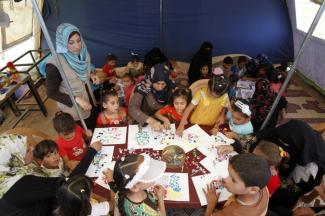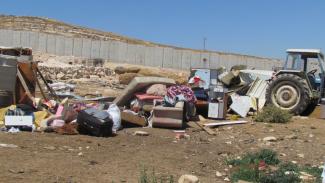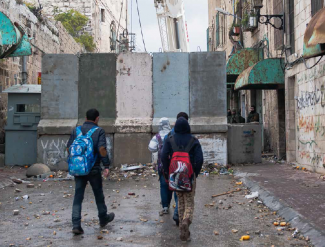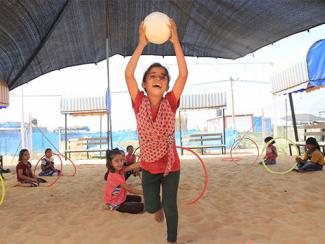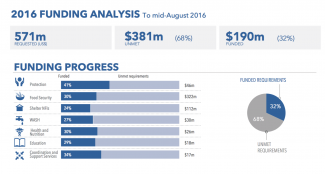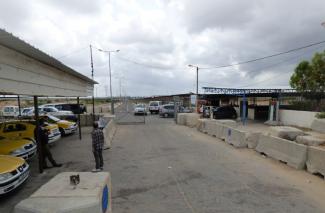An article contributed by UNICEF: The 51-day conflict in the Gaza Strip and Israel in the summer of 2014 had a devastating impact on children. At least 551 Palestinian children and four Israeli children were killed; 2,956 Palestinian children and 22 Israeli children were reportedly injured.
The Monthly Humanitarian Bulletin | August 2016
Two years after latest hostilities, one in four children in Gaza need psycho-social support. Decline in number of businesspeople, medical patients and humanitarian workers allowed to leave Gaza. Sharp rise in the number of Palestinian structures in the West Bank, particularly East Jerusalem. Only one third of this year's Humanitarian Response Plan funded.
In this document
Demolitions across the West Bank surged in July and August 2016. The Israeli authorities demolished, forced people to demolished, or confiscated 177 Palestinian-owned structures, displacing 267 Palestinians and otherwise affecting the livelihoods of another 2,800 in the two-month period.
Since 1997, Israel has exercised full control over 20 per cent of Hebron city, known as H2. The population of H2 includes approximately 40,000 Palestinians living alongside several hundred Israeli settlers, who reside in four separate settlements. Access restrictions imposed by the Israeli authorities in H2, compounded by systematic harassment by Israeli settlers and, occasionally, by Israeli forces, have resulted in the displacement of thousands of Palestinians and a deterioration in the living conditions of those who remain.
In his monthly briefing to the Security Council on 29 August, the UN Special Coordinator observed, on the occasion of the two-year anniversary of the Gaza ceasefire, that “while progress has been made on reconstructing the physical damage, sadly we are miles away from repairing the psychological damage of the conflict.” This month’s Bulletin highlights the psycho-social impact on children in Gaza, with one out of four children (225, 000) still requiring psychosocial support and 33,000 needing specific case management. By end-June, over 63,008 children had been provided with psychosocial support and counselling services and 1,542 children with case management.
As of mid-August, the 2016 Humanitarian Response Plan (HRP) for the oPt was severely underfunded in both percentage terms (32 vs. 50) and in absolute terms (US $183 vs. $355 million) compared to the 2015 HRP. Almost 90 per cent of the funds received have gone to UN agencies, leaving INGO and local NGO projects substantially underfunded. This can be attributed, at least in part, to a global economic slowdown and to a number of major crises, particularly in the Middle East, which have put humanitarian budgets under increased pressure.
As part of a ‘separation policy’ to separate West Bank Palestinians from Palestinians in Gaza, the Israeli authorities prohibit the passage of Palestinians in and out of Gaza. Exceptions are made for certain categories, principally businesspeople and traders, medical patients and their companions, and employees of international organizations issued with Israeli permits. During the easing of access restrictions following the 2014 hostilities, the number of Palestinians from exceptional categories crossing through Erez more than doubled in 2015 compared to the previous year. Nevertheless, numbers remain significantly lower than at the start of the second intifada in 2000, when some 26,000 Palestinians crossed Erez daily for wider purposes. In 2016, data for July show a 15 per cent decline in exits from Gaza versus the monthly average for the first half of the year, with a 27 per cent decline in the number of exits for businesspeople and traders.
